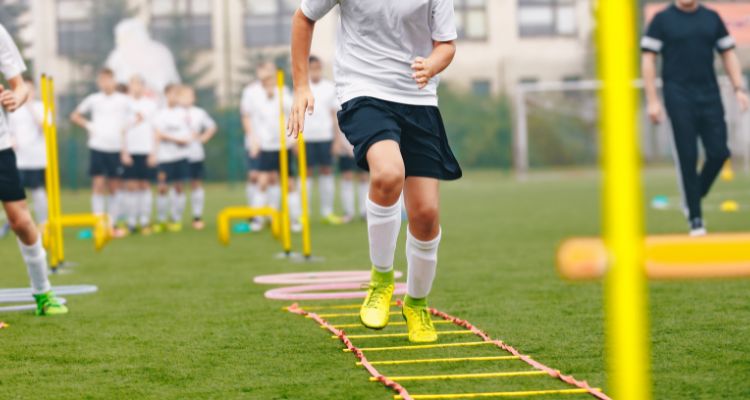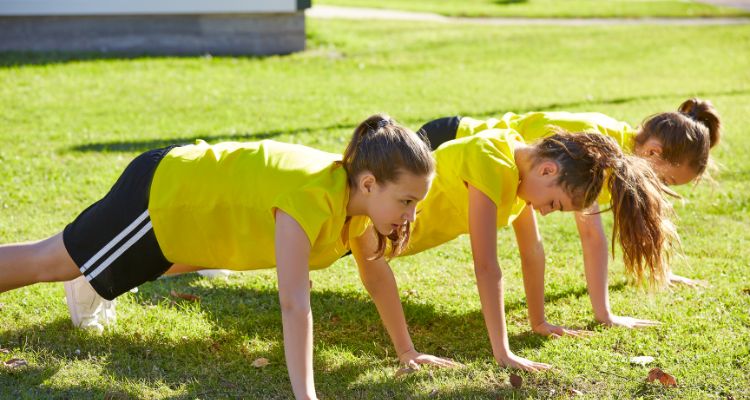
One of the most important jobs of a coach is to define the preseason program for his or her squad.
A preseason football training program consisting of drills and exercises is essential for each player’s optimal adjustment and performance of their abilities during the season.
It normally lasts from August to September, thus it lasts between a month and a half to a month and a half and a half, depending on the team.
How are preseason football training exercises planned?
There is no specific method that all teams must follow throughout the preseason, but there are certain things that we believe are important to keep in mind while creating your football training program
- Do gradual training rather than going from 0 to 100
- Allow for a period of observation and analysis in order to develop routines aimed at instilling good habits in the players
- Physical conditioning should be tailored to each player
- Work on their technical, athletic, tactical, and mental abilities
- Do not overburden the players in the early days
- Improve team cohesion
Coaches should construct exercise programs for each player and the team as a whole based on these criteria.
This minimizes overexposure to training sessions that focus only on the team as a whole rather than the level of each individual player, which could lead to various forms of injuries.
Simultaneously, because we have a very short amount of time, we must aim to condense and maximize the preparation without overburdening the players physically or emotionally.
As therefore, it is critical to strike a balance between solid training and fine-tuning for the start of the season, while also attempting to individualize as much as possible.
It is critical for football coaches to have an app that can store all team information in order to keep an extensive record of each player’s progress and physical condition.
But, before we go any further, we must address the controversy over preseason training with or without a ball. We leave this decision to the coaches since it is a very personal choice that must be made in relation to the skills they want to improve, but we believe in gradually incorporating the ball.
Now, we’ll go through some general football exercises that any coach can tailor to the needs of his players. Some body-strengthening and technical-tactical workouts are covered.
Keep an eye on this professional football endurance circuit.

1. Football training program: endurance
To enhance endurance as part of a comprehensive preseason football training program, we recommend incorporating jogging and running activation workouts. This approach not only promotes increased calorie burn but also elevates your heart rate, progressively preparing your muscles for the demands of the upcoming season.
As a key element of our preseason football training program, we prioritize warming up and boosting the heart rate through carefully timed intervals. For example, participants engage in two blocks of 8 minutes each, separated by a 3-minute break involving normal-paced walking.
During the initial block, a slow jog lasting 1 minute is performed, succeeded by a fast jog lasting 30 seconds. In the second block, both the slow and fast jog durations are extended to 45 seconds each. This targeted approach aims to optimize cardiovascular conditioning and muscle readiness, ensuring athletes are primed for peak performance on the field.
This is how it would look:
BLOCK 1
- Slow jogging (1 minute)
- Quick jogging (30 seconds)
- Slow Jogging.. (until reaching 8 minutes)
BREAK
- Take a 3-minute walk.
BLOCK 2
- Slow jogging (45 seconds)
- Quick jogging (45 seconds)
- Slow jogging (up to 8 minutes)
Furthermore, the difficulty can be enhanced by adding extra weight, which aids in better managing breathing, which is critical on the playing field.
Everything will be determined by the type of training sessions you wish to conduct.
2. Football training program: endurance & motor skills
You will need markers, cones, silhouettes, posters, or floor hoops for this task.
The benefit of this drill is that it allows you to work on different aspects within the same area and one excercise at the same time. From endurance through running, coordination and motor skills with obstacles and driving the ball, if you wish to incorporate it into the workout.
The coaches and trainers will divide the field into portions and create a specific activity for each section, such as the following:
- Floor ladder to jump at different speeds.
- Jump from one floor hoop to the next from left to right.
- Ball driving through floor cones or with barriers and silhouettes
It can be adjusted to different distances, increasing the challenge, by working alternately and combining several of them.
3. Football training program: keeping possession and advancing the ball while running
As a pivotal component of our preseason football training program, this exercise is designed to involve the entire team simultaneously, aiming to enhance ball retention without interruptions during continuous running.
This dynamic drill places a strong emphasis on both endurance and control, fostering players’ ability to maintain possession while on the move. The exercise unfolds with two teams positioned in their respective areas, each striving to advance toward the opponent’s goal through a combination of short and long passes across the field.
While ball stealing is not allowed in this game, coaches have the option to elevate the difficulty by incorporating this element, using only one ball in play. This modification adds a tactical dimension to the exercise, further challenging players to strategize and execute cohesive gameplay.
Don’t forget to check out our top exercises for football training circuits.

4. Football training program: core
In the context of a comprehensive preseason football training program, core workouts take on a pivotal role in maintaining pelvic and lumbar health, averting accidents, and attaining optimal body stability.
These targeted exercises play a crucial role in strengthening and stabilizing various areas of the body, with a particular focus on the lower body—a key consideration in our preseason training program.
Numerous studies have highlighted the manifold benefits of core training, ranging from improvements in shots, ball striking, to enhanced agility during changes of direction while running.
To achieve a well-rounded and functional workout, our program integrates isometric exercises with no movement alongside dynamic workouts featuring a broader range of motion. Experts strongly recommend combining these core exercises with strength training to enhance specific physical qualities essential for football performance.
Outlined below is a curated list of commonly suggested core exercises. We encourage coaches to structure the workout plan based on the team’s level, progressively increasing the difficulty as players advance through the preseason football training program.
- Isometric planks: lateral, supine, prone, with and without rotation
- With fitball: lumbar extension, trunk and hip flexion, gluteus, hamstrings, plank in suspension or static, and moving arm funds.
- Miscellaneous: gluteal lift, isometric rotators, gluteal isometric, hip extension, combined arm, abdominal wheel.
- Suspension work with ropes.

5. Football training program: upper and lower body
It is a common misconception to focus solely on enhancing the lower body in workouts a misconception we aim to rectify.
While the legs play a predominant role in football, it is essential for players to possess overall physical strength for various aspects of the game, including duels with opponents, defensive maneuvers, goalkeeping, and more.
By incorporating upper body training sessions into the weekly schedule, emphasizing both pushing and pulling exercises, football players can achieve a balanced and holistic physical strength. This inclusive approach not only contributes to improved physical complexion but also enhances overall performance and final power on the field.
Recognizing the importance of a well-rounded training regimen, our preseason football training program emphasizes the significance of addressing both upper and lower body strength to ensure athletes are adequately prepared for the diverse physical demands of the game.
Here are a few examples:
- Pull-ups.
- Push-ups.
- Pull-ups.
- Military press.
- Face pull.
- Lateral raises.
- Inverted rowing.
To keep the lower body in shape and achieve a proper balance, we should work on strengthening the gluteus, quadriceps, and hamstring muscles in preparation for match day.
- Squats
- Deadlifts
- Lunges
- Quadriceps extension
- Hamstring extension
- Plyometric jumps with a box
- Calf raises
- Squats
- Dorsiflexion
- Specific workouts include direction changes and landings
Keep in mind that we must be extra cautious with weight loads in any sort of exercise because we are more prone to injuring ourselves.
Therefore, the trainer must concretely define the exercises individually according to the level of each player and progressively increase the difficulty.



